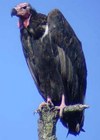| Admin | Date: Monday, 2011-05-30, 4:42 AM | Message # 1 |
 Egg
Group: Administrators
Messages: 57
Status: Offline
| There are many choices of finches to keep. The difficulty many finch breeders or hobbyists have is choosing which species to keep. There are very few people that will keep only one species of finch and even those people that do, usually pick a species that has different color mutations. There can be problems with maintaining too many different species, however. If you have mixed colonies, not all species will coexist in harmony. This sometimes takes some trial and error and a few plucked birds to figure out. Even if they do coexist, they will often interfere with each others breeding activities. Even mixing multiple pairs of like species can be trouble. Territorial species will sometimes fight to the death in the small area of an aviary. Unless you have unlimited cage space, the more species you add to your collection, the fewer numbers of each you can house and maintain. This can severely limit your ability to develop and sustain a line of birds. Yet, with all these disadvantages, few things are rewarding as having a mixed flight of birds coexist and produce their young in such a setting.
Here are a few of the species and their mutations that I have or have kept and some of my experience with them:
Gouldian Finch
Though the Gouldian Finches are not extremely difficult birds to keep, they are rather expensive and are generally kept by more experienced bird keepers. Gouldian Finches are also not too difficult to breed and will breed well in colonies or as pairs in cages.
To learn to care for this bird, a beginner could start with the Zebra Finch. They are much less expensive and have very similar environment requirements and many of the same behaviors.
Pintail Whydah
"Whydah" is the name of a town in Nigeria where these birds are common. Pintail Whydahs are also called "Widow Birds" due to the long tail the male has during the breeding season. During this time It is twice the length of his body and often black. In the wild, when the males are not in their wonderful breeding plumage, they are surprisingly inconspicuous.
Though the Pintail Whydahs are not difficult birds to keep, they are best if kept by themselves or with only a select few other bird types, as they can be rather quarrelsome. Breeding them is difficult as they are parasitic breeders, which means they only lay their eggs in another birds nest, and are quite particular about it.
Red-headed Parrot Finch
The Red-headed Parrot Finch is a very beautiful grassfinch. They are not real common in captivity but are not difficult to keep and breed. They do not do well as a caged pet however, but thrive wonderfully in an aviary. In the aviary they are very active, agile flyers and friendly with lots of other kinds of birds.
In the wild they live in grass and brush lands, as well as abandoned plantations. They eat grass seed they find on the ground as well as climbing the grass stocks and eating the seed still at the top. They also eat bugs and insects. This grassy environment provides a large portion of their needs from food and cover, to bedding materials for their nests.
Society Finch
Society Finches are one of the most charming and interesting of all the small Mannikins! They are believed to have been developed in Asia over three hundred years ago by Chinese and Japanese breeders. It is assumed they are a domestic form of the White-backed Munia (Lonchura striata) though their absolute ancestry is uncertain.
Spice Finch
The Spice Finch gather in small groups in the wild. They are very peaceful and sometimes their groups will be mixed with a variety of other small birds. Spice Finches are very hardy and dealers in India have been known to dye this little bird different colors, especially green, and offer them for sale as "painted finches". This must not be confused with the real Painted Finch (Emblema picta)!
Strawberry Finch
The Strawberry Finches are petite little birds and as beautiful as they are charming. They are excellent at breeding in an aviary and make a good species for the beginner. They are reasonably hardy, but if kept in an outdoor aviary they will need a warmed shelter in the winter.
Zebra Finches
The Zebra Finches have been a most popular cage bird for over 100 years! They originated in Australia and belong to the Estrildidea family. In the wild, these are hardy little grass finches live in groups and breed in colonies. There they occupying grass or brush lands, dry savannas, open areas, pastures and cultivated fields, eating mostly grass seed they find on the ground.
|
| |
|
|
| emman | Date: Sunday, 2013-01-27, 12:07 PM | Message # 2 |
|
Egg
Group: Users
Messages: 2
Status: Offline
| Ganda ng parrotfinch and whydah, meron na kayang whydah d2 satin? 
baka may additional info pa kayo sir sa mga endemic na finces sa pinas pa share narin,
|
| |
|
|